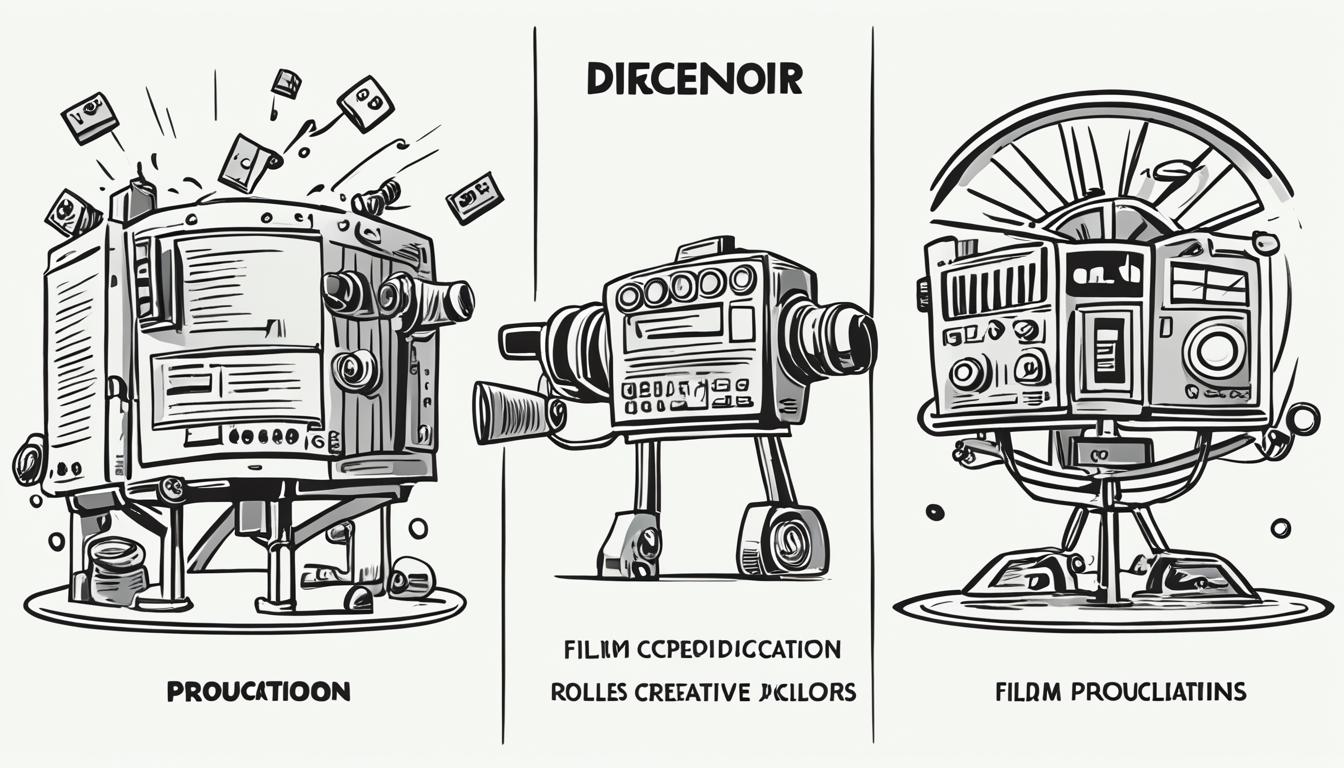In the multifaceted sphere of the film industry, comprehending the distinctions between a producer and a director is vital. Each role contributes significantly to the cinematic art form’s creation process. Producers emerge as the cornerstone, excelling within the realms of business and logistics; they are responsible for initiating projects, aligning tasks, managing budgets, and ultimately guiding a film from pre-production to the audience. Their influence spans the entire film production hierarchy, establishing them as the project’s managerial backbone.
Conversely, the director is tasked with translating the written script into a visual story, shaping the film’s artistic and dramatic composition. Directors are at the helm of the film set, steering the creative aspects, from casting to storyboard execution. They work closely with actors and crew to bring their unique vision to life on the screen. Understanding the nuanced contrast between these roles illuminates the collaborative nature of creative vs business roles within film production.
Key Takeaways
- The producer embodies the business acumen required to manage a film project from inception to distribution.
- Directors focus on the artistic vision, guiding the creative execution of the film’s narrative.
- Understanding the producer vs director dynamics offers insight into the film production hierarchy.
- Producers and directors play interconnected, yet distinct, roles in the film industry.
- Acknowledging the creative vs business roles helps in appreciating the complexity of film production.
Understanding the Film Industry Roles: Producer and Director
In the dynamic realm of film production, the key differences between a producer and a director are crucial for the success of a movie project. Understanding these differences helps clarify the film production hierarchy, enabling industry professionals and enthusiasts alike to appreciate the distinctive contributions of each role.
A producer’s job description encompasses the entirety of a film’s journey. Starting from the germination of an idea to the eventual distribution and marketing, producers are the operational backbone of the film industry. They are responsible for several key aspects:
- Scouting and selecting potential stories and scripts
- Securing funding and managing budgets for the projects
- Hiring and coordinating the cast and crew
- Overseeing the day-to-day operations of film production
- Collaborative involvement in the post-production process
- Formulating and executing marketing strategies
Meanwhile, the responsibilities of a director focus on the creative execution of the film. Their vision is what drives the narrative and artistic direction of the project:
- Interpreting the script and bringing the story to life
- Guiding the performance of the actors
- Making decisions on the visual and aural aspects of the film
- Working alongside the production team to realize cinematic goals
- Insuring that the film’s creative vision is maintained throughout production
Within the framework of these roles lies a complex interplay of business and creative considerations, as each position requires a deep understanding of both individual responsibilities and collective objectives. Despite their distinct pathways, the collaboration of producers and directors is a dance of creative vision meeting logistical mastery.
The producer and director must synergize their expertise to shepherd a film from its inception to the audience. A producer might raise the curtain by initiating projects and allocating resources, but it is the director who orchestrates the screen magic, turning conceptual blueprints into compelling narratives that captivate audiences worldwide.
The successful outcome of a film not only speaks to the talent of its producers and directors but to their ability to merge the business with the creative, the practical with the imaginative—their roles are, after all, two halves of a whole that is the finished cinematic experience.
What is the difference between a producer and a director in Film Production
The landscape of film production is shaped by distinct roles that carry with them a set of unique responsibilities and expertise. In particular, the producer and director hold central, collaborative film production positions that steer a film’s journey from script to screen. A deep dive into these roles illuminates the symbiotic nature of the creative film vision and the operational endeavors in film.
Film Producer: The Business Facilitator
Producers in the film industry are the multifaceted linchpins who oversee the producer job description, encapsulating an expansive range of business roles in film. They are tasked with managing film production from the ground up, setting into motion the mechanisms that transform an idea into visual storytelling. As masters of post-production management, these business facilitators wear numerous hats – from securing funding and logistical planning to navigating the complexities of distribution and rights management.
Film Director: The Creative Visionary
Directors carve out the narrative soul of a film with an unwavering dedication to visualizing scripts and shaping performances. Entrusted with director responsibilities, they sculpt the movie’s atmosphere and pace, ensuring every artistic decision aligns with the intended creative film vision. The director’s creativity extends beyond mere aesthetics to also embrace the nuances of film set dynamics, driving the storytelling with a potent visual language understood by audiences worldwide.
Fostering Creative vs Business Goals
In the realm of film production, a perennial dance ensues between the creative aspirations orchestrated by the director and the financial and logistical framework managed by the producer. Navigating film set dynamics involves a delicate balance where creative vs business roles are distinct yet mutually dependent, requiring a harmony that serves the film’s greater good.
Producer and Director: A Synergy in Film Set Dynamics
The true power of film production lies in the synergistic relationship that the producer and director cultivate. United by a shared passion for storytelling, these roles demonstrate the essence of collaborative film production. While their responsibilities may diverge, focusing either on creative expression or operational strategy, it’s within the charged atmosphere of a bustling film set that their confluence truly shines.

The dynamic interplay of these central figures in the filmmaking process echoes through every stage of production, weaving a tapestry of artistry codified by the intricacies of the film industry. As business complements creativity and vision meets execution, the functions of the producer and the director reflect the dual heartbeat of cinematic storytelling.
Conclusion
Within the tapestry of the film industry lies a delicate but powerful collaboration between two pivotal roles: the producer and the director. In the realm of film production hierarchy, their interplay is akin to a dance where each step is critical to the harmonious delivery of a finished cinematic expression. The key differences between producer and director highlight the uniquely tailored responsibilities that, when woven together, create the film industry’s enduring success stories.
Summarizing Key Differences Between Producer and Director
Understanding the film production hierarchy is essential for recognizing how producers tackle the business roles – securing investments, harnessing resources, and executing operational strategies – that give a film its skeleton. In contrast, directors wield the creative torch, casting light upon the script and employing visionary ideas that flesh out the bones of the project. This synergetic partnership is facilitated by the producer’s job description, which encompasses enabling the director’s responsibilities to guide the film’s artistic journey.
The Intertwined Success of Creative and Operational Endeavors
The meshing of creative vs business roles within the film industry necessitates a seamless partnership. This delicate balance hinges upon both the director’s ability to navigate the landscape carved out by the producer and the producer’s adaptability to fully support the director’s creative exploration. The result is a collaborative film production that thrives through mutual respect and shared objectives, harmonizing the structural and narrative elements of storytelling.
Insights into the Film Production Hierarchy and Collaboration
The artistry of film is not merely a result of individual excellence but an outcome of strategic collaboration and combined expertise in both business and creative fields. Producers and directors together sculpt the nucleus of cinematic ventures, infusing them with life through film industry roles that are both distinctive and interdependent. The dynamic interplay between practical film set dynamics and creative impetus underscores a deeper, cooperative mechanism that is the essence of compelling filmmaking.
FAQ
What are the primary roles of a film producer?
A film producer is responsible for overseeing each stage of a movie’s production, from development to post-production. They initiate and manage the project, handle the budget, secure funding, coordinate tasks, and ensure the movie is completed on time and within budget. Producers also play a vital role in marketing and distribution phases.
How does a director contribute to a film?
A director is the creative force behind a film, responsible for visualizing the script and bringing the story to life on screen. They manage the artistic aspects of the film, guide actors’ performances, and oversee the work of the crew to ensure that the visual, auditory, and narrative elements align with their creative vision.
In what ways do the responsibilities of a producer and director differ?
The producer mainly focuses on the business side of film production, such as financing, logistics, and management, while the director handles the creative elements, such as storytelling, direction of actors, and the visual representation of the film. While the producer ensures the film is completed efficiently and commercially viable, the director shapes its artistic expression.
How do producers and directors collaborate on a film?
Producers and directors collaborate closely throughout the filmmaking process. The producer provides the director with the resources, budget, and schedule necessary to realize their vision. In turn, the director ensures their creative choices fit within these constraints. Joint decisions such as casting are crucial areas where their cooperation is most visible.
Can a person be both a producer and director on a film?
Yes, it’s possible for a person to take on both roles, especially in independent filmmaking. When one person acts as both producer and director, they manage both the creative and business aspects of the film, although the dual role can be challenging due to the distinct nature and expansive demands of each position.
Why is it important to differentiate between the producer and director’s roles?
Differentiating between the roles of producer and director is important for the clear allocation of responsibilities and decision-making in the filmmaking process. It helps maintain an organized and efficient workflow, with each professional focusing on their expertise to ensure the film’s success both creatively and financially.
What challenges do producers and directors face on set?
Producers and directors often face challenges such as balancing the film’s creative vision with budgetary constraints, managing time effectively, coordinating a large team of creative professionals, and ensuring that production deadlines are met. They must also be prepared to deal with unexpected issues that can arise during shooting.
How does the success of a film reflect the producer and director’s collaboration?
The success of a film often hinges on the effective collaboration between the producer and director. When they work together harmoniously, it ensures that creative visions are realized without sacrificing the logistical and financial integrity of the film, leading to a final product that resonates with audiences and meets production standards.






